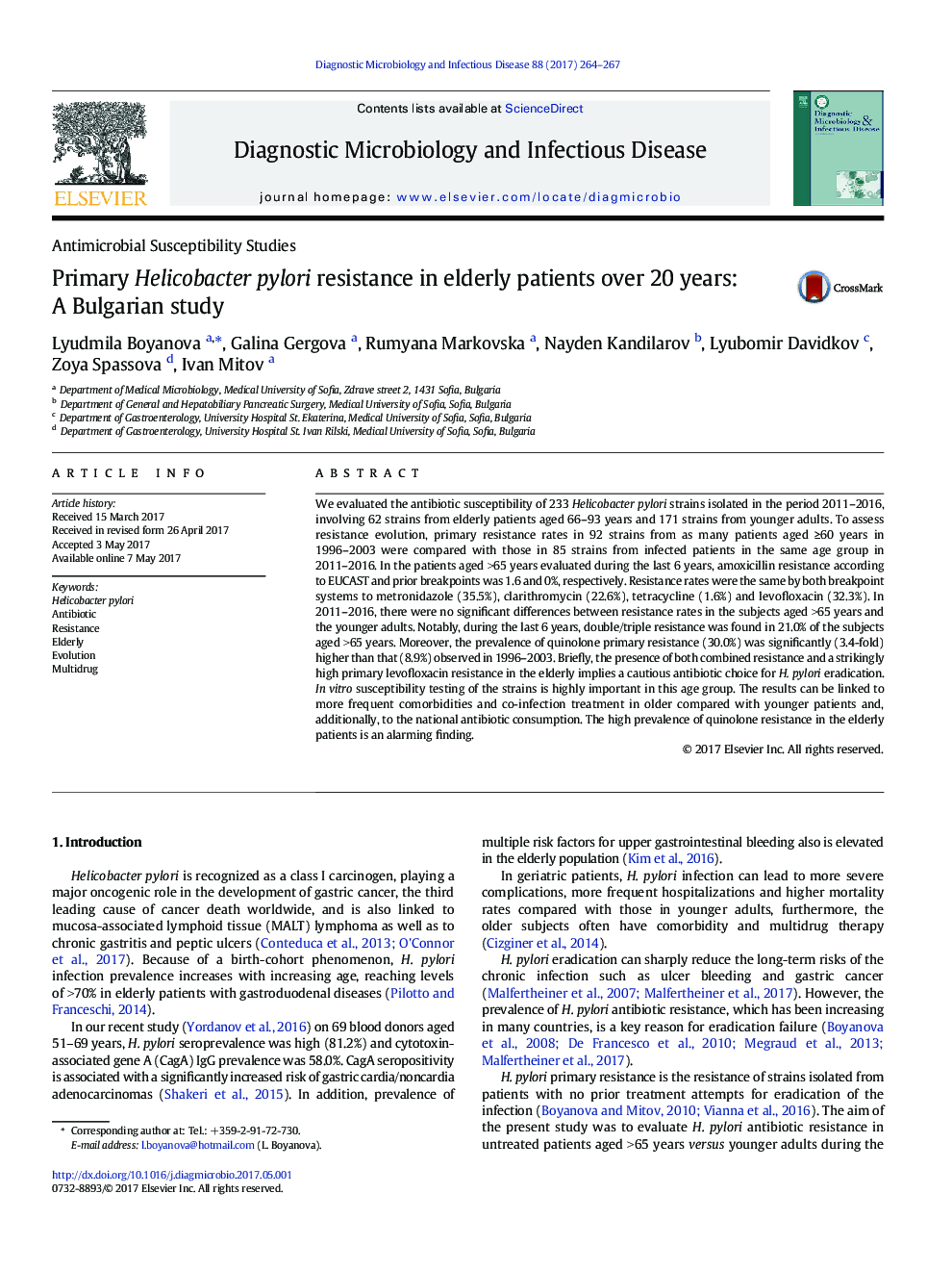| کد مقاله | کد نشریه | سال انتشار | مقاله انگلیسی | نسخه تمام متن |
|---|---|---|---|---|
| 5665985 | 1407780 | 2017 | 4 صفحه PDF | دانلود رایگان |
- Primary H. pylori antibiotic resistance of 233 adult patients was evaluated.
- In the elderly, quinolone resistance has increased 3.4-fold since 1996-2003.
- Double/triple resistance was found in 21% of strains from patients aged >65Â years.
- The influence of comorbidities and national antibiotic consumption is discussed.
We evaluated the antibiotic susceptibility of 233 Helicobacter pylori strains isolated in the period 2011-2016, involving 62 strains from elderly patients aged 66-93 years and 171 strains from younger adults. To assess resistance evolution, primary resistance rates in 92 strains from as many patients aged â¥60 years in 1996-2003 were compared with those in 85 strains from infected patients in the same age group in 2011-2016. In the patients aged >65 years evaluated during the last 6 years, amoxicillin resistance according to EUCAST and prior breakpoints was 1.6 and 0%, respectively. Resistance rates were the same by both breakpoint systems to metronidazole (35.5%), clarithromycin (22.6%), tetracycline (1.6%) and levofloxacin (32.3%). In 2011-2016, there were no significant differences between resistance rates in the subjects aged >65 years and the younger adults. Notably, during the last 6 years, double/triple resistance was found in 21.0% of the subjects aged >65 years. Moreover, the prevalence of quinolone primary resistance (30.0%) was significantly (3.4-fold) higher than that (8.9%) observed in 1996-2003. Briefly, the presence of both combined resistance and a strikingly high primary levofloxacin resistance in the elderly implies a cautious antibiotic choice for H. pylori eradication. In vitro susceptibility testing of the strains is highly important in this age group. The results can be linked to more frequent comorbidities and co-infection treatment in older compared with younger patients and, additionally, to the national antibiotic consumption. The high prevalence of quinolone resistance in the elderly patients is an alarming finding.
Journal: Diagnostic Microbiology and Infectious Disease - Volume 88, Issue 3, July 2017, Pages 264-267
